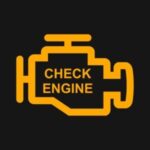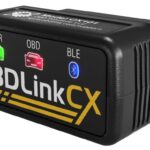The world of automotive modifications and emissions testing often finds itself at a crossroads, especially for car enthusiasts. The question of bypassing or “cheating” OBD-II emissions tests has been a topic of discussion among resourceful tuners and individuals seeking to navigate vehicle regulations. Are “Obd Cheat Scanners” a viable solution, or are they simply a myth born from frustration with emission control systems? Let’s delve into the intricacies of OBD-II testing, the allure of cheat devices, and the realities of maintaining vehicle compliance.
The OBD-II Emissions Test Landscape
In many regions, including areas around St. Louis as mentioned in a forum discussion, emissions testing relies heavily on the OBD-II (On-Board Diagnostics II) port. The process is seemingly straightforward: if your vehicle’s computer is free of diagnostic trouble codes (DTCs), it passes. However, the presence of any current or stored codes results in a failure, necessitating repairs and re-testing. This OBD-II based system, while efficient, can be a source of headaches for car owners, particularly those with modified vehicles.
A classic carburetor engine intake, representing a pre-computer era of engine management.
One forum user, “alex,” sparked a conversation by questioning the existence of OBD-II “cheat” devices. They pondered why, given the demand, there wasn’t a thriving market for tools to either hack the OBD computer or provide replacement systems to circumvent emissions tests. This inquiry taps into a common desire: to find a quick fix for emissions issues, especially when dealing with modifications or perceived regulatory hurdles.
Readiness Monitors: The Gatekeepers of OBD-II Testing
As “Ranger50” points out in the discussion, emissions testing isn’t just about clearing codes right before the test. OBD-II systems incorporate “readiness monitors.” These are internal diagnostic routines that the vehicle runs to verify the functionality of emission control systems. When codes are cleared, these monitors reset to an “incomplete” state. A vehicle will fail inspection if these monitors haven’t completed their tests, even if there are no current codes present. This “readiness” concept prevents simple code clearing from becoming a universal cheat.
The Appeal of OBD “Cheat” Methods
Despite the readiness monitor system, the allure of circumventing emissions tests remains. The forum discussion highlights several approaches, some more practical or ethical than others:
-
Code Clearing Tools: “xd” mentions the Torque app for Android and Bluetooth OBD adapters as a way to clear codes. While these tools are readily available and useful for diagnostics, they are not “cheat scanners” in the sense of permanently bypassing emissions systems. They can temporarily clear codes, but underlying issues will likely return, and readiness monitors will need to reset.
-
Exploiting Exemptions: “mmosbey” brings up legal exemptions based on vehicle age, type, or usage. For example, older vehicles or those registered as commercial vehicles may be exempt from certain emissions tests. This is a legal way to avoid testing, but it’s not a “cheat” in the scanner sense; it’s leveraging existing regulations.
-
Mechanical Defeat Devices (Humorously Suggested): “Grizz” jokingly suggests removing the computer altogether and reverting to a carburetor. While humorous, this highlights a drastic (and impractical) approach to avoid computer-based emissions checks. It also underscores the fundamental shift from mechanical to computer-controlled engine management.
-
O2 Sensor Manipulation: “patgizz” mentions using spark plug non-foulers to move the rear oxygen sensor out of the exhaust stream, tricking the system into thinking the catalytic converter is working. This is a more direct attempt to manipulate sensor readings and “cheat” the system, although its effectiveness and legality are questionable.
Why Consider “Cheating” the OBD-II System?
The reasons behind seeking OBD-II bypass methods are varied and complex, as revealed in the forum:
-
Modified Vehicles: As “Swank Force One” and “alex” clarify, the desire to “cheat” often arises from modifications that improve performance but may trigger emissions-related codes. Aftermarket parts like performance camshafts, as mentioned by Alex, can sometimes lead to codes even when the car is running efficiently. Enthusiasts may feel unfairly penalized by regulations that don’t account for well-tuned modified vehicles.
-
Perceived Test Inaccuracies or Inconvenience: “nicksta43” expresses frustration with the perceived inconsistencies and “joke” nature of some emissions tests, citing instances of failing at one location and passing at another. This can fuel a desire to circumvent a system viewed as arbitrary or unfair.
-
Cost of Repair: While not explicitly stated as a primary driver in this forum, the cost of diagnosing and repairing emissions system faults can be a significant burden. For some, the temptation to “cheat” might stem from a desire to avoid expensive repairs, even if temporarily.
The Reality of OBD “Cheat Scanners” and Ethical Considerations
While the term “OBD cheat scanner” might conjure images of sophisticated devices that effortlessly bypass emissions tests, the reality is more nuanced. There isn’t a readily available, foolproof “scanner” that magically makes a non-compliant car pass an OBD-II emissions test.
The methods discussed, like code clearing or sensor manipulation, are often temporary fixes or workarounds that may have limited effectiveness and potential negative consequences. Furthermore, tampering with emissions control systems is illegal in many jurisdictions and can contribute to environmental pollution.
A typical OBD-II port, the gateway to vehicle diagnostics and emissions testing data.
As “alfadriver” poignantly asks in the forum, “why?” The ethical implications of intentionally polluting should not be ignored. While frustrations with emissions testing are understandable, particularly for enthusiasts, prioritizing clean air and legal compliance is crucial.
Focus on Legitimate OBD-II Diagnostics and Solutions
Instead of seeking “cheat scanners,” a more responsible approach is to leverage OBD-II technology for its intended purpose: accurate diagnostics and vehicle maintenance. OBD-II scanners, like those offered at obd2scanner.store, are invaluable tools for:
- Identifying the Root Cause of Emissions Issues: Reading DTCs provides crucial information for pinpointing problems within the emissions system.
- Monitoring Vehicle Health: OBD-II scanners can display live data from sensors, allowing for proactive monitoring of engine and emissions system performance.
- Verifying Repairs: After repairs, scanners can be used to clear codes and monitor readiness monitors to ensure the vehicle is actually compliant.
Ultimately, while the idea of an “OBD cheat scanner” might be tempting, it’s essential to approach emissions testing with a focus on proper diagnostics, legitimate repairs, and respect for environmental regulations. Understanding the OBD-II system and utilizing diagnostic tools effectively is the most reliable and ethical path to vehicle compliance.


